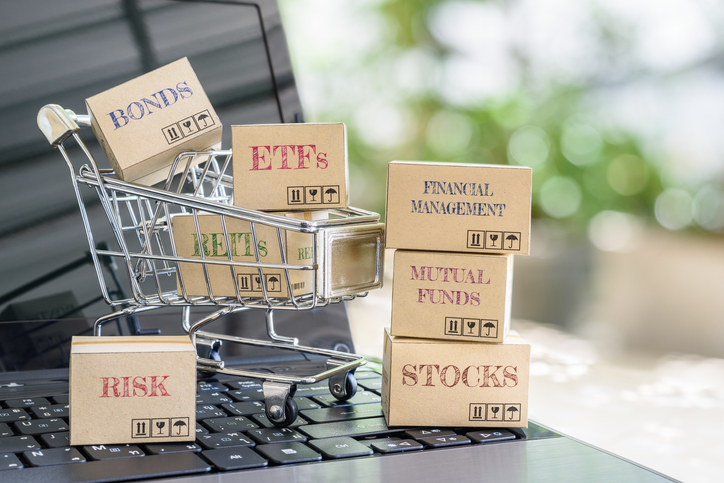Investing has been a popular topic of conversation in the news lately. When a particular subject matter becomes hot, it’s common for people to jump on the bandwagon for fear of missing out (FOMO). If you’re looking to create wealth by investing, it’s vital to understand the different asset classes and the categories various investments fall into before shelling out any money.
Before we dive in, do remember that I am not a licensed investment professional. Still, I want to provide you with some basic information I have learned from my investing experience.
Asset Classes
An asset class is a collection of investments that share similarities, such as how they behave in the marketplace, the purchasing process, and government regulation. The four that I believe have the best potential to build a healthy portfolio are:
- Equities (stocks)
- Fixed-income and debt (bonds)
- Money market and cash equivalents
- Real estate and tangible assets
The goal is to build a balanced portfolio and spread your investments over multiple asset classes. Doing so is ideal because it helps to reduce risk while maximizing return. If your portfolio is predominantly based in one area and that sector goes into a bear cycle, you could be in trouble. When your portfolio is diversified, and just one asset class experiences a bear cycle, your other investments should balance any losses.
Bear and Bull Cycles
The terms “bull” and “bear” are used in investing in referring to market conditions and whether they are appreciating or depreciating. Choosing to invest means the market’s direction is a significant force that has a considerable impact on your portfolio.
A bull market means the market is on the rise and the economy is stable, while a bear market means an economy that is receding, causing many stocks to decline in value. Both bear and bull markets will have a considerable influence on your investments, so it’s a good idea to take some time to determine what the market is doing when making investment decisions.
Equities
The term equity has a different definition depending on the context, but generally, equity represents ownership. When you purchase shares in a company, you’re purchasing ownership in that company. For example, if you buy 500 shares of a company that owns 50,000, you own 1 percent of the company. As part-owner, you have rights to a portion of a company’s profits, and these are usually paid out to investors in the form of a dividend. The dividend amount varies by company, and some companies may choose to use the dividends to reinvest back into the company for growth. On the other hand, when a company issues bonds, it’s taking loans from buyers.

Fixed-Income and Debt
Fixed income is a class of assets and securities that pay out a set level of cash flows to investors, typically in the form of fixed interest or dividends. At maturity, investors are repaid the principal amount they had invested. Government and corporate bonds are the most common types of fixed-income products. Unlike equities that may pay no cash flows to investors or variable-income securities, fixed-income security payments are known in advance. Fixed-income securities can be very attractive to conservative investors who are seeking a diversified portfolio.
Money Market and Cash
This asset class refers to any form of currency, both local and foreign. Unlike stocks and other assets, cash equivalents must have a determined market price that doesn’t fluctuate.
Cryptocurrency has exploded in popularity recently and is going through a bull cycle at the moment. When bull cycles occur, it attracts a lot of attention because investors fear missing out. If you are going to invest in Cryptocurrency, make sure your investments are diversified and you aren’t making it a massive part of your overall portfolio. It is also worth mentioning that Cryptocurrency would be a speculative high-growth part of your portfolio, not underpinning income. The key to remember with investments is that you are trying to out-earn your spending.
Real Estate and Tangible Assets
Tangible assets are things you can see and feel. Real estate is the most common type of tangible assets that people own. However, artwork, equipment, gold and livestock, also fall into this category. Generally, these types of assets tend to be more stable but less liquid than financial assets and can withstand inflation periods. Although, a mistake I see often is people that are more than 90 percent invested in real estate. Real estate is a cyclical industry and when you’re heavily invested, a bear cycle will be particularly painful. If real estate is your day job having as much as 50 percent exposure to that asset class would be reasonable. However, if you’re an investor a single asset class should be between 10 to 20 percent of your portfolio.
The Bottom Line
One of the biggest mistakes I see is over-investing in one asset class. There is a high degree of risk with any fluctuations that might happen. A key question to ask yourself is, are you investing for stability long term, or are you speculating and taking a gamble?
With any investment, you shouldn’t deploy a large percent of your total capital. Investing 80-90% is a risky position, especially when there is a down cycle. Investing 10-20% in a single asset class is a much smarter move. Lastly, I don’t suggest investing in something just because many people are talking about it. Quite often, when people are talking about it, it’s too late! Manage your exposure carefully.
Let’s Connect!
HarbourClubUSA.com
Unity-Group.com



